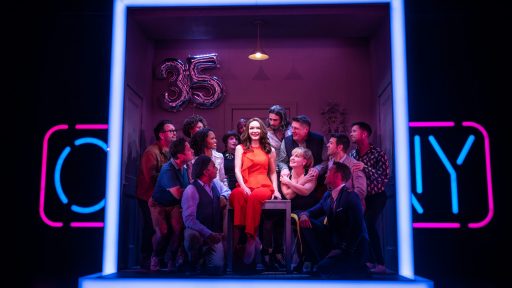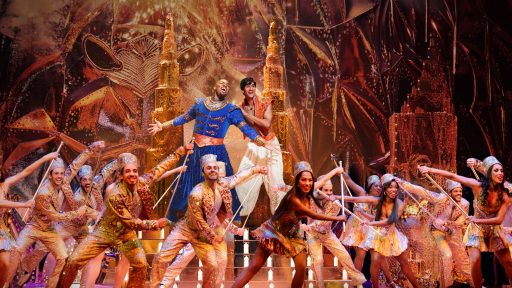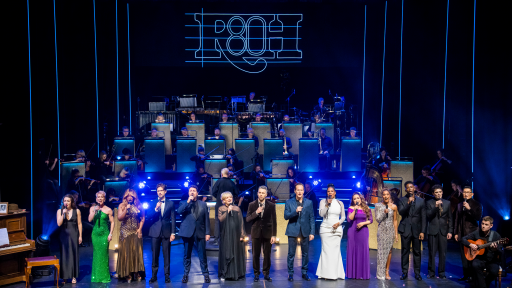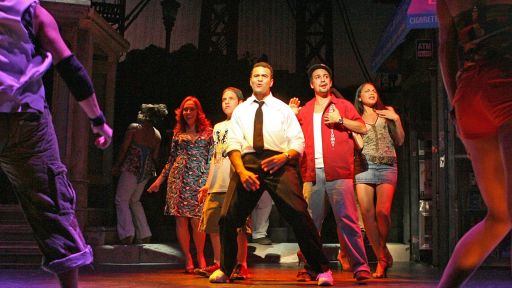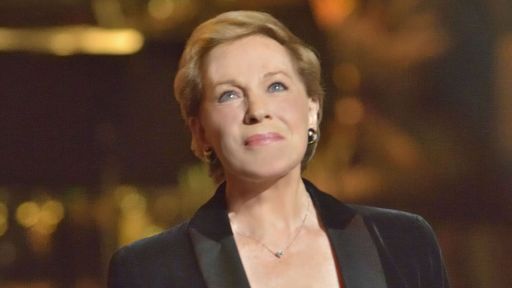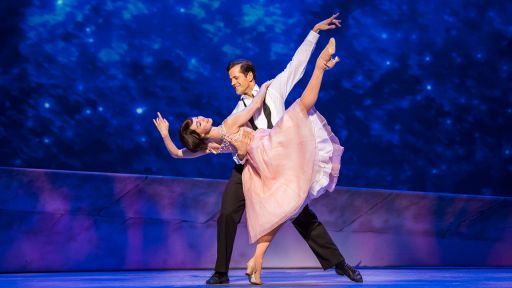Get your backstage pass to Irving Berlin’s Holiday Inn with Production Stage Manager Michael Passaro.
Features
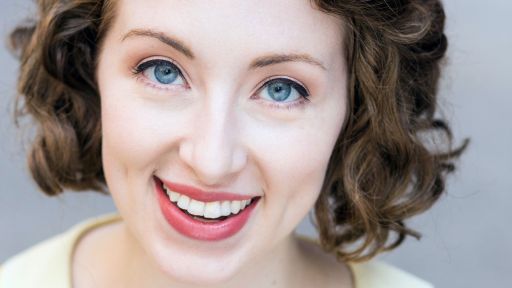
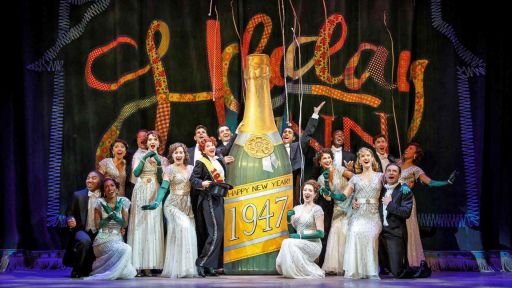
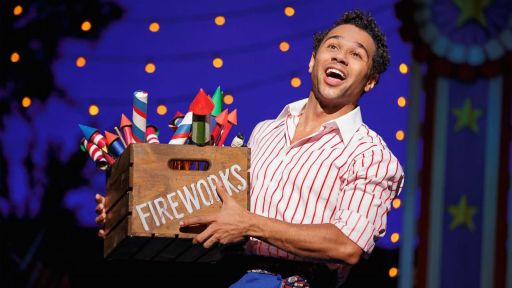
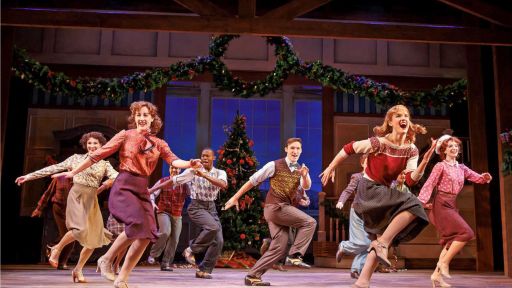
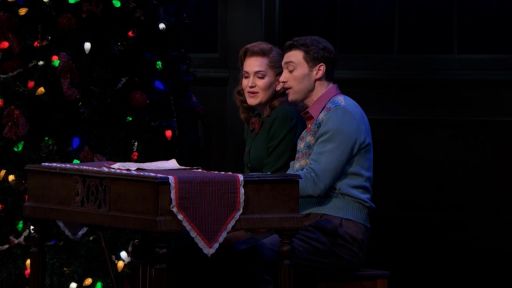

Good evening ladies and gentlemen, it is 7:30 and this is your half-hour call.
Half hour call, ladies and gentlemen.
This evening'''s performance will be conducted by Justin Hornback, we have a full company, it is Saturday night on Broadway and the call is half hour.
(singing): If you'''re burdened down with trouble, if your nerves are wearing thin, pack your load down the road, and come to Holiday Inn!
I'''m Michael Passaro, I'''m the production stage manager here at Holiday Inn, and we'''re about to go backstage, uh, so everyone can see how we set things up before the show.
This is where, uh, the stage manager calls the show from.
We, uh, stand here, uh, with our headset, we'''re connected to every single department, uh, in the theater, uh sound, lighting, scenery, uh, stage managers, wardrobe, costumes.
We can have a full view of the stage, we have an infrared view so we can see things when it'''s completely dark on stage, we can see everything moving, and we call every single cue in the show, every time that there'''s a lighting change, every time that there is a scenery change, we are the ones who are managing it, it comes through one person, one system, it'''s sort of like being an air traffic controller, cause we want to make sure that the planes coming in land safely and the planes taking off land safely.
Clear it out, clear it out, clear it out, clear it out, quick, quick, quick, quick please, thank you!
Where are my lights?
How am I supposed to make a movie if I can'''t see?
Part of our jobs as stage managers while we'''re rehearsing the show and putting together all of the technical elements is for us to keep track of every single move that happens on stage, whether it'''s a scenic move, a prop move, or an actor move.
And some of the, uh, documentation that I'''m gonna be showing you here now is strictly related to the technical elements of the show and uh, how we move from scene to scene, uh, with the lightning quick transitions that, uh, you'''re about to see tonight.
Let'''s bring Hollywood to Holiday Inn.
(singing): On this day of independence, on this Independence Day, listen to an American troubadour from the USA.
The set is comprised of, um, very old-fashioned, traditional theater technology on the one hand, and on the other hand a very modern, computerized, automated scenery as well.
So it was our job, uh, with the help of our designer and our crew to make sure that all of those elements work together seamlessly so we can move from scene to scene as quickly as we do.
So we keep track of every single, um, set move on these, uh, tracking sheets as we rehearse the show, and then we translate that into, uh, what we call, um, a calling script so the stage managers here at the desk every single night can see the show on monitors and calls through the headset every time that there'''s a lighting change, and every time that there'''s a scenic change, and we have the help of a, a cue light system, which informs the crew when they should be standing by for cues to execute, and then when we turn the light on they'''re standing by, and when we turn the light off, they execute the cue.
And we have an entire book of, uh, every single lighting cue, and then this sequence here going into Blue Skies we have a number of different scenic cues, and you can see for the automated portions of the scenery just how many items move in any one sequence.
We couldn'''t do a show as complicated as Holiday Inn without the benefit of automated scenery, automated lighting, um, sound cues as well, but the most important aspect of, uh, all of this are the people, because no matter how much automation, how many computers we have running the show, it'''s still a very old-fashioned business, it'''s made by people, it'''s constructed by hand craftspeople, and it'''s put together and run by people every single night, so it'''s the people who are the most important aspect of what we do back here in spite of all of the great technology that we have, uh, to make the show as exciting as it is for the audience.
This is a backstage hallway, but it'''s a good example of how we use every bit of space here at Studio 54, this is a very large show for a very small backstage area, so we need to use the hallways and the stairwells to store things and uh, if you were to come here during the show, all of these hooks would be completely filled with costumes, there would be shoes and hats all along the way, because we have to use every inch of space for quick changes.
As you can see back here, very crowded, we use every single inch of space all the way upstage and downstage on both sides of the stage.
This cradle above me here is filled with props, we keep all of the act two props in this during act one, and then at intermission this entire floor comes down and we take out all the props for act two and put all the props for act one onto it and then store it, because we do not have enough room to keep everything on stage on the deck level all at the same time.
One of the great features here of Studio 54 is that we have this architectural beam that runs all the way upstage and downstage, so as you can see, no designer can move this beam, so they have to design around this architectural feature, so everything that, uh, we move in and off stage has to conform to this, uh, this height level, so for example, you see this fence unit here, our team came up with this really ingenious way of making sure that it could store and fit offstage, we don'''t have enough room on the deck to store it, so it flips up into this position, and as you can see, fits perfectly here, as it tracks on, this comes down and the whole unit can go on stage safely.
Oh!
Hi, Charlie!
Work continues here at Holiday Inn even though this is our final week.
We are making sure that all of the props look in tip-top shape, they'''re being painted for, uh, for this week'''s performances.
She started the heat wave, by letting her seat wave, and in such a way that the customers say that, (singing): She certainly can can-can!
One of our jobs as stage managers is to make sure that the cast and crew have a system for repeating the show eight times a week in the same manner, so that the audiences that come any time during the run see the same show that we have on opening night.
So everything is organized here very, very specifically.
Everything is labeled for each scene, it always goes back to the same spot so we can find it the next day, so the actors can find it, so the crew can find it, so that we can repeat it.
Here'''s one of the most I think interesting examples of creative use of backstage space.
In one of the holiday numbers, Easter Parade, all of the women wear these very large Easter bonnets, but because they'''re so big they cannot wear them from their dressing rooms and then still be able to come up the stairs and get on stage, so we have a cradle on each side of the stage that'''s flown into the air, and all of the bonnets are kept on that.
As soon as the ladies change their costumes, this flies in, bonnets get put on, they go on stage and do the number, (singing): Oh, I could write a sonnet about your Easter bonnet!
They come off stage, they take the bonnets off, they go back into their storage spaces, and the entire unit lifts off the ground.
And if you thought that backstage on the other side was crowded, this is literally the amount of room we have back here.
That'''s less than three feet to organize a cast of this size and a show of this scope.
Ladies and gentlemen, the call is places, places please for the top of the show, Justin Hornback and the orchestra to the pit, please, the call is places, places please, thank you.
You May Also Like
